Cenizo in bloom after the rain
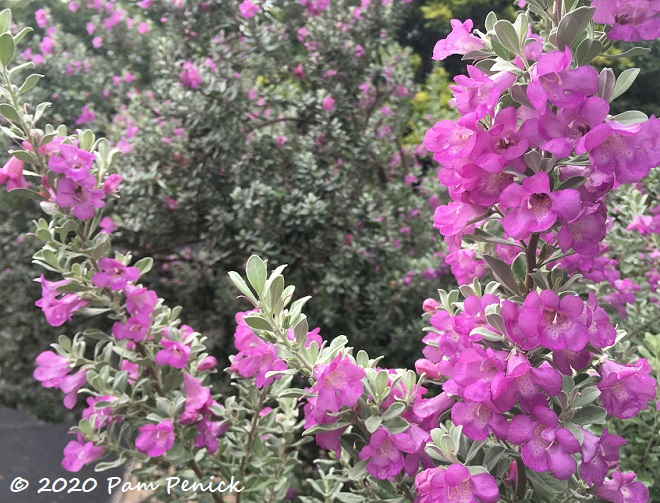
Praise be to the rain gods, who delivered 2 inches of rain Thursday and Friday and broke Austin’s month-long heat wave. Rain lilies and oxblood lilies are waving their flower flags in celebration, but the prima donna of rain-celebrating plants has to be cenizo (Leucophyllum frutescens).
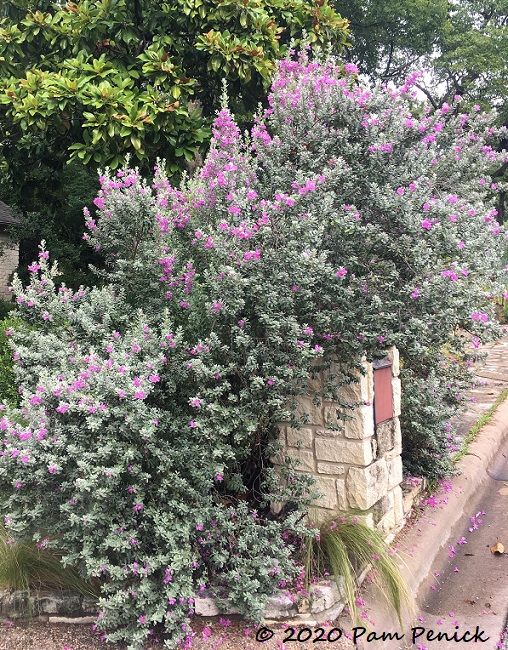
This native Texas shrub with tiny, silver-gray leaves and supreme drought and heat tolerance can go unnoticed for long stretches — even when sprawling across a neighbor’s mailbox. Then the weather shifts and — boom! — the entire shrub lights up with violet flowers.
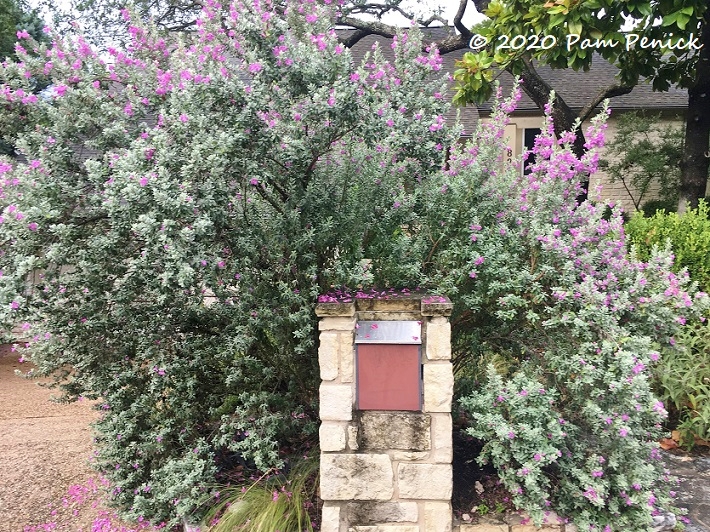
Cenizo goes by many names, including Texas ranger and Texas sage. But my favorite is barometer bush, so-called because flowering is triggered by rain or even a change in the humidity level just before it rains. Watering cannot trigger a bloom event, so don’t bother. And besides, cenizo needs no supplemental watering once established.
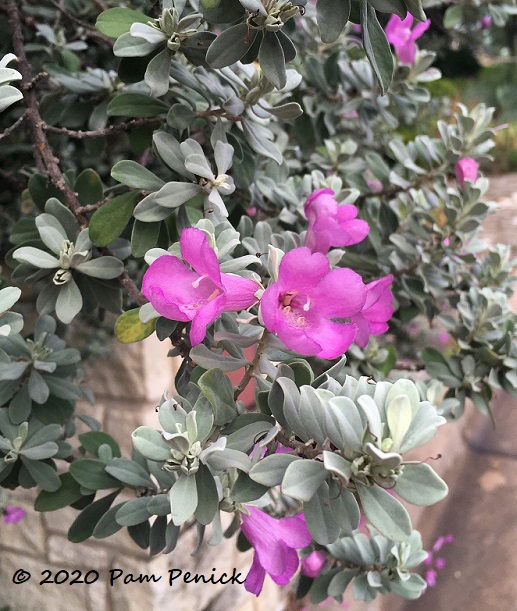
All cenizo asks for is plenty of sun and heat and to be left alone. It prefers alkaline soil and grows well in the thin caliche soil of west Austin.
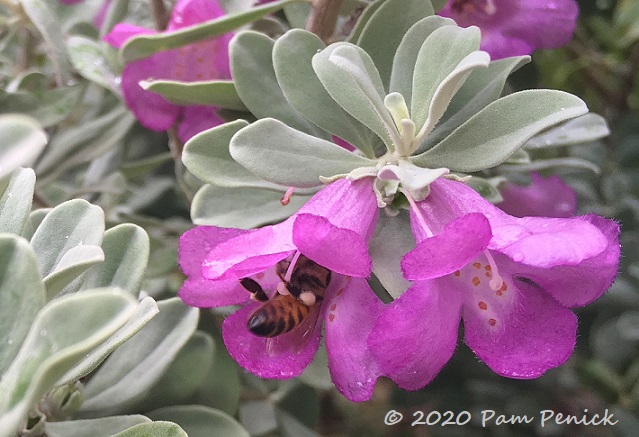
Bees love the flowers and spelunk in them as soon as they appear.
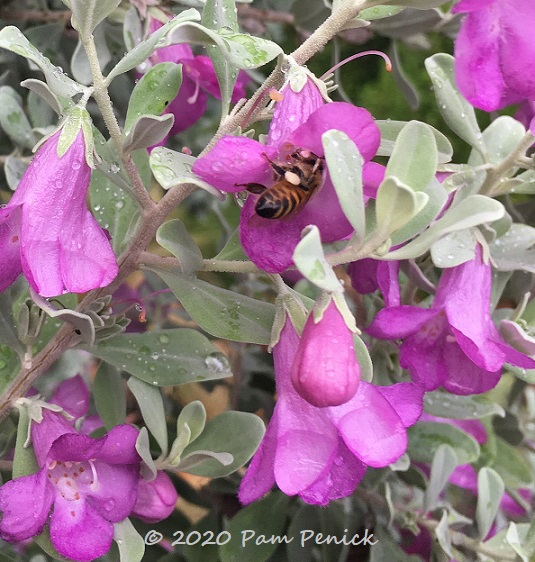
Check out her full pollen baskets.
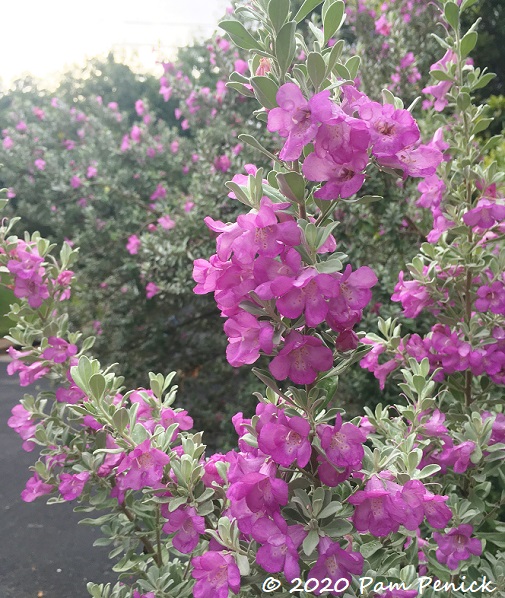
Like the bees, I always have to stop and admire the showstopping bloom of this otherwise understated shrub whenever it rains.
__________________________
Digging Deeper
Come learn about gardening and design at Garden Spark! I organize in-person talks by inspiring designers, landscape architects, authors, and gardeners a few times a year in Austin. These are limited-attendance events that sell out quickly, so join the Garden Spark email list to be notified in advance; simply click this link and ask to be added. Season 8 kicks off in fall 2024. Stay tuned for more info!
All material © 2025 by Pam Penick for Digging. Unauthorized reproduction prohibited.


They’re always gorgeous in bloom in your garden, Pam. I have 2 Leucophyllum laevigatum but it’s not nearly as attractive a specimen and, as our rainstorms are less frequent than yours on average, they’re rarely in flower.
I wish it were in mine, Kris. I lack the sun this plant needs, but happily there are many around the neighborhood I can enjoy. I wouldn’t say it flowers often though — maybe 4 or 5 times a year?
Wow, I love it. That one is new to me.
A Southwestern native.
Such an amazing performance. I saw this up at Pitzer College in Claremont, CA, and had to look it up and found it was known as the barometer plant. (And I love that line: “check out her pollen baskets”!)
It’s a beauty when in bloom. Here’s an excellent online brochure showing the various Leucophyllum: https://wateruseitwisely.com/leucophyllum-texas-sage/
You aren’t kidding when you say show stopper.
Right? 🙂
Wondering if this particular cenizo (L. frutescens) is fragrant?
Not that I’ve ever noticed.
Do you know if this plant would grow in Coastal Texas or is it too humid and wet? I live in Seabrook area and for the past several years our summers seem to get drier and drier but we do have humidity being close to the water. Have never seen the plant in our area so just curious. Love your photos and articles!!!
I don’t know so I googled it and got this from the Lady Bird Johnson Wildflower Center: “According to this USDA Plant Profile map, cenizo is endemic to Texas, mostly growing in west and south Texas. Obviously, it grows other places, including the Wildflower Center in Austin, but going to Houston is a stretch.”
Check out this list of “native” plants for Houston, many of which I’d also consider low-water for your region: https://buchanansplants.com/going-native-our-top-10-native-plants-for-houston/